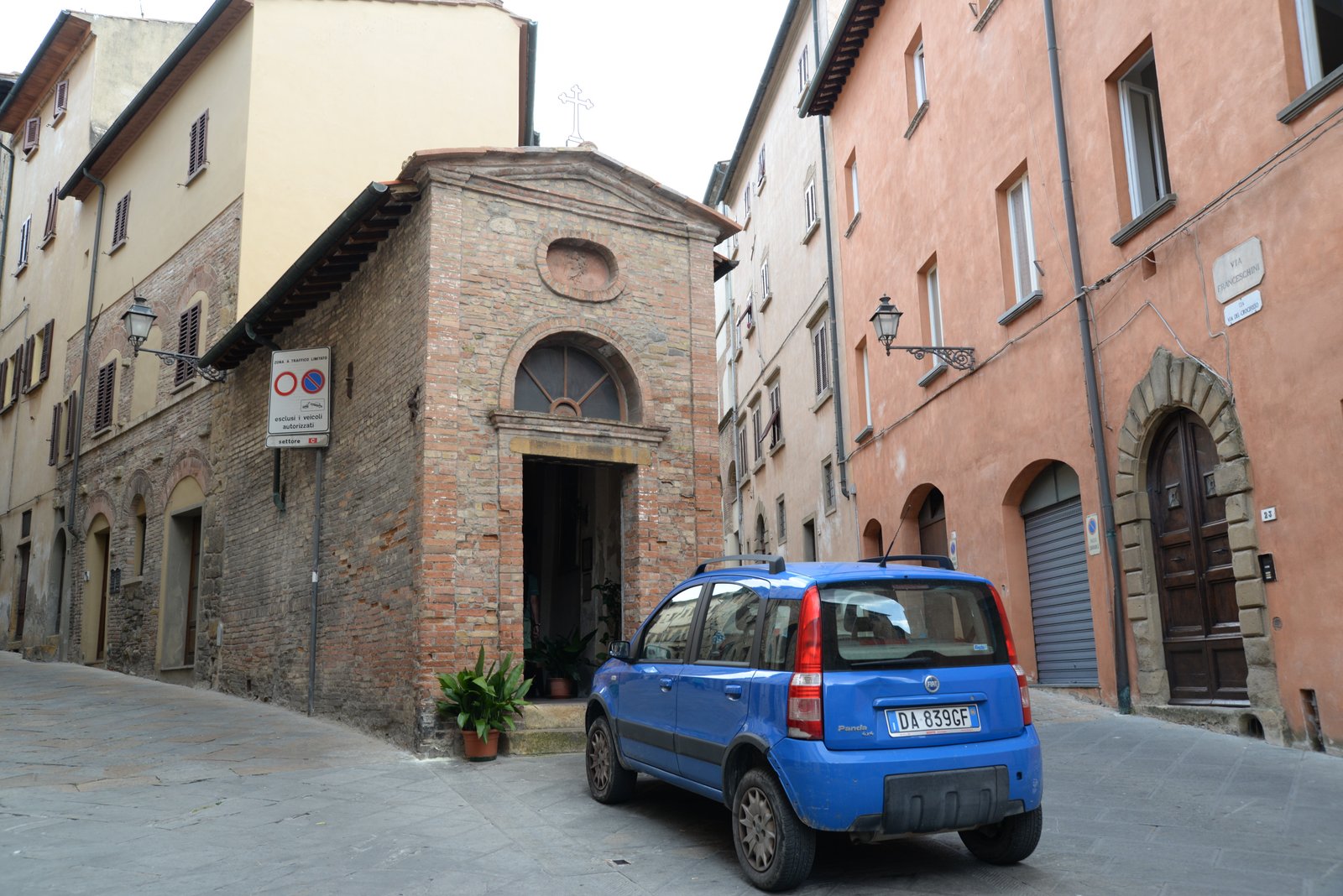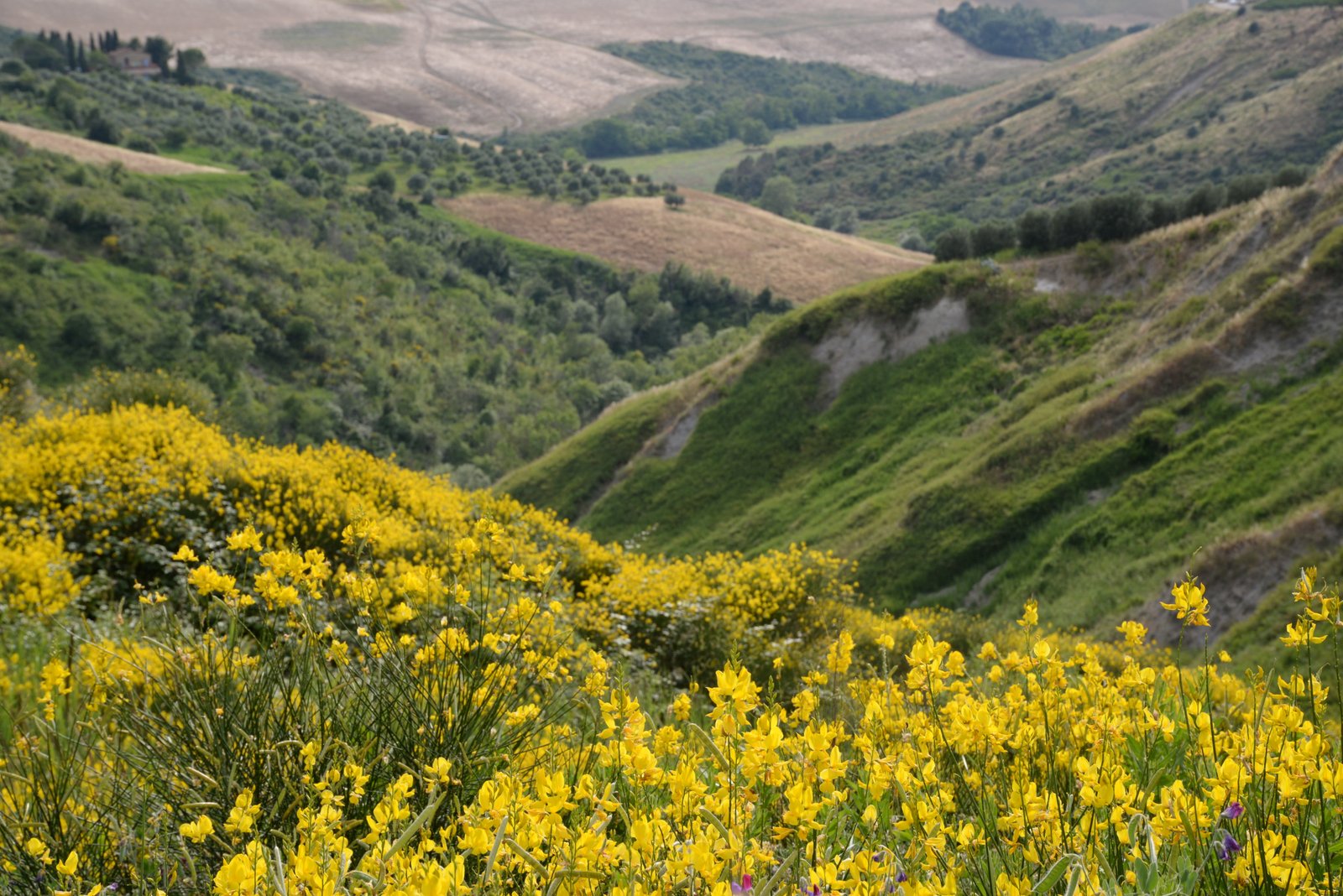Tuscany is the area of gelato, geothermal energy and picturesque villages on hill tops. Nearly every hill top, no matter how steep, has a village, small or smaller, on the top. The hill top was the place to be, surrounded by a fortified wall, if invasions came from one of the zillion kings or princes, who once each ruled over their own piece of Italy-to-be.
Today, some of these villages make nice business, being crowded by tourists during the summer. There is San Gimignano, the town with the tall towers, the result of some strange medieval “mine is bigger than yours” contest between local noble families. And the best gelato evvah!
Volterra is next door, or next hill top. Fewer towers, but larger, including more cozy-mozy cobbled streets and shops with “artisan” and “local produce”.
For a lover of Italian food, Volterra is a good place to be. But, since this is a geology blog, let’s look at the hill tops themselves.
You remember the geology around Pomarance and Larderello, best describes as “some crash&bang tectonic mess”? With faults for the water for hydrothermal energy. Volterra is very different.
Most Tuscan geology is beneath that damn vegetation, but Volterra has a steep west cliff, best admired at distance. The cliff itself is yellowish, the rocks beneath are grey-whitish…if you can call them rocks. More like mud, Mr Limestone-not-stone, yet, I presume? And in the mud are the proofs that they originate in the sea: Shells, and the spikes of sea urchins.

The Big Miocene Wall in Volterra. Behind it lurks not dangerous monsters, but nice streets and cafés.
The limestones are of Miocene age, somewhere around ten million years old. Geologically speaking, these limestones are toddlers, just like Malta, of the same age. But ten million years ago, Tuscany was a shallow sea, far from any disturbance by coarse material. It may not have been clear though, in fact it might have been quite milky from all the algae making chalk, and may be only some sturdy bottom dwellers thrived.
And then…the big uplift. The same crash that created the mishmash just abit further west, lifted Volterra sediments piggy back up to its current five hundred meters elevation.
Slightly later, Volterra was founded by the Etruscans on that very hill top. And then the Romans came. And then pizza and gelato. And finally, us, the height of evolution: Geology tourists.








Thankyou for this . In Soiana Soil there are lots of crustacean she’ll, oysters and clams